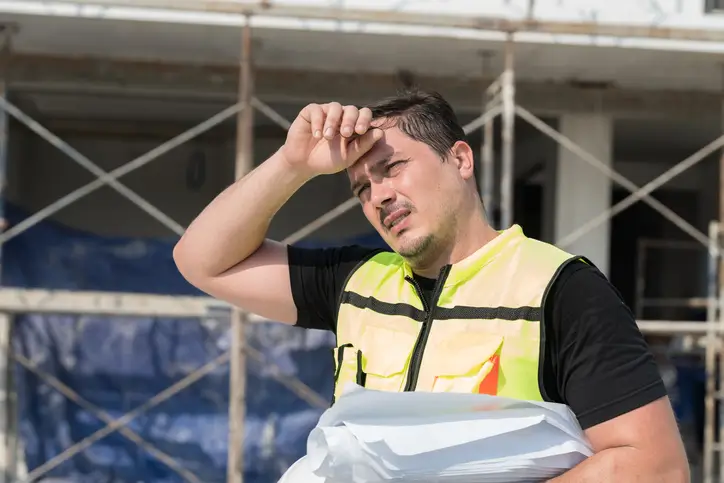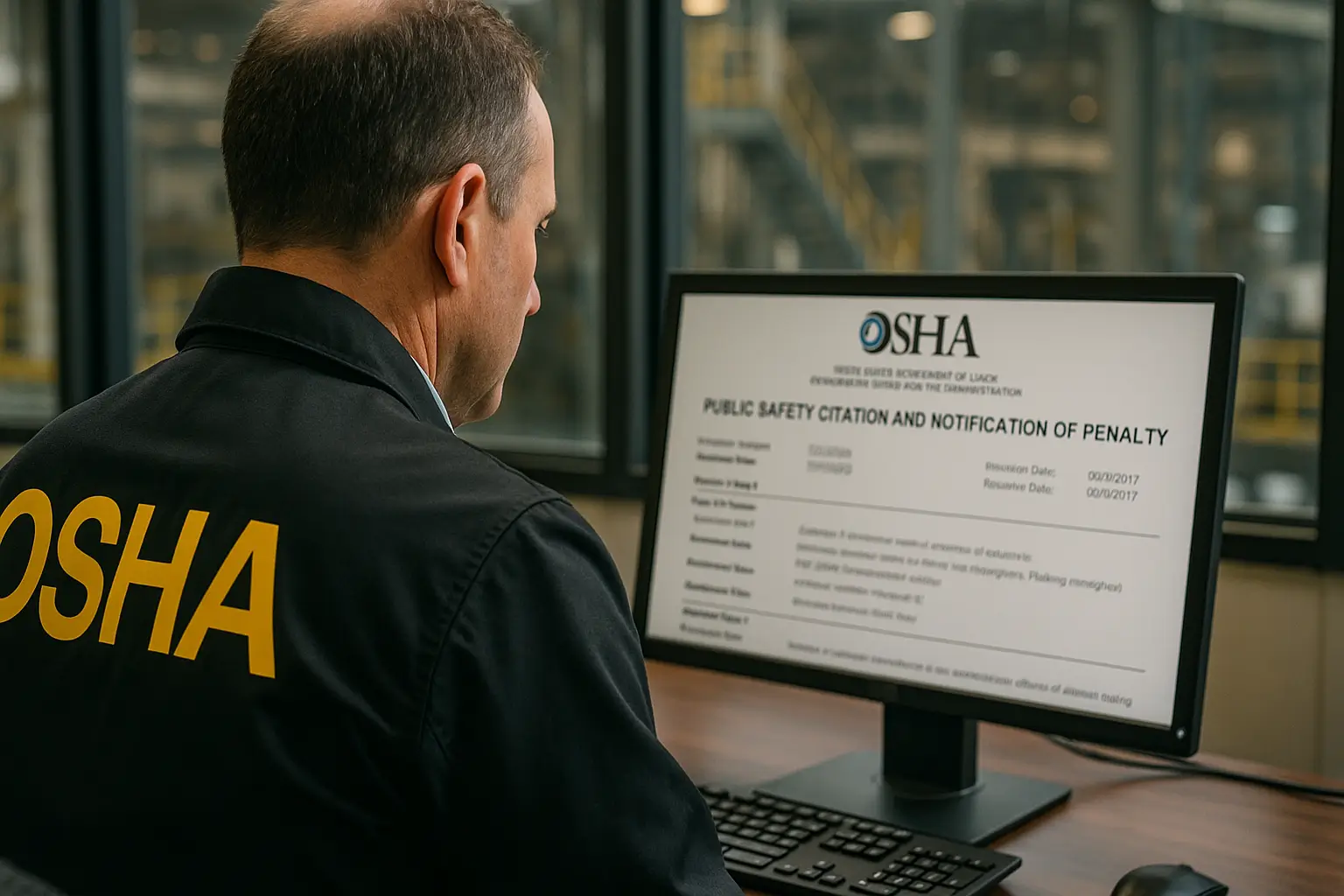Heat stress is a concerning hazard, particularly in industries involving outdoor or high-temperature environments. According to the U.S. Environmental Protection Agency, a total of 986 workers died from heat exposure in many different industries from 1992 to 2022. Moreover, the Bureau of Labor Statistics showed that over 36 work-related deaths were caused due to environmental heat exposure in 2021. These statistics are clear indicators of the need to enforce safety regulations in major industries like construction.
What is a Heat Stress Safety Talk?
A heat safety talk is a brief and focused meeting governed by organizational authorities to address the dangers of heat exposure. It involves determining the steps to train and educate workers to combat the hazards and to guide them in taking necessary measures in case of an emergency. The safety talk encourages open discussion and awareness among teams about heat hazards.
Why Heat Safety Is Critical in Warm/Hot Environments
Prolonged exposure to heat without proper precautions can lead to life-threatening conditions. In such an environment, workers show poor concentration and focus, which increases the risk of accidents. Heat stress can creep up quickly and silently, making education and preparation vital. Moreover, based on OSHA regulations, employers have a legal and moral obligation to protect workers from known environmental risks.
What Is Heat Stress?
When a body is exposed to excessive heat and is not able to cool down, it leads to a buildup of heat in the body. It usually happens in a hot environment and with a lack of ventilation. Workers wearing heavy suits, working in confined spaces, and being involved in intense physical activities in a hot environment experience heat stress. This can result in a range of heat-related illnesses and sometimes life-threatening accidents. Early recognition and response are key to avoiding serious health impacts.
Types of Heat-Related Illnesses
Here is a brief explanation about some common heat-related illnesses.
Heat Rash:
It causes skin irritation from excessive sweating. It usually appears as red clusters of pimples or blisters.
Heat Cramps:
Extreme heat exposure causes mild to severe painful muscle spasms. It is caused by heavy sweating and salt loss.
Heat Exhaustion:
Heat exhaustion symptoms include dizziness, nausea, headache, and heavy sweating; needs immediate cooling. Prolonged exposure to heat causes vomiting in many workers.
Heat Stroke:
It refers to a medical emergency marked by confusion, fainting, or high body temperature that requires emergency response.
Who Is at Risk?
All those workers who are involved in outdoor job activities are at risk of heat-related illnesses. Workers belonging to construction, agriculture, landscaping, and indoor environments in high-heat environments are at risk. Workers at the commercial kitchen, boiler room, and foundries are at high risk. Employees who wear heavy and impermeable protective gear have to follow proper safety measures.
Signs and Symptoms of Heat-Related Illness
It’s important to recognize the signs and symptoms of heat-related illnesses for early intervention and prevention of severe outcomes. Heat exhaustion typically presents with symptoms such as heavy sweating, weakness, dizziness, nausea, headache, and a rapid heartbeat. Heat cramps, characterized by painful muscle spasms, and heat rash, a skin irritation from excessive sweating, are also common early indicators. Understanding these warning signs helps workers and supervisors act quickly, potentially saving lives and preventing long-term health effects.
Preventing Heat Stress on the Job
It’s important for workers to be aware of basic steps and practices that can keep them safe from heat-related hazards. It’s the employer’s job to educate them and make sure that they are following the proper SOPs to avoid experiencing any trouble. Here are some effective practices that one must follow:
Hydration
Workers should drink water every 15–20 minutes, even if they’re not thirsty.
Rest breaks in shaded or cool areas
Provide regular rest in shaded, cool areas to help bodies recover.
Acclimatization
Gradually increase workload and exposure time for new or returning workers.
Lightweight clothing/PPE considerations
Encourage breathable, lightweight, and light-colored clothing or PPE that allows airflow.
Employer Responsibilities (OSHA Guidelines)
As per OSHA regulations, employers have the legal responsibility to protect and safeguard workers from all heat-related illnesses. They must provide access to potable drinking water, ensuring workers stay adequately hydrated throughout their shifts. This should be easily accessible and replenished frequently, especially during hot weather.
Moreover, employers must ensure that rest breaks are scheduled in shaded or cool areas, giving employees a chance to recover from heat exposure. Another vital responsibility is implementing a heat illness prevention plan, which includes training workers. They should be able to recognize the signs of heat stress, know what to do in an emergency, and set procedures for acclimatization.
Lastly, there are some effective tools like Wet Bulb Globe Temperature (WBGT) index that can help assess the actual heat risk and allow employers to adjust work/rest schedules accordingly. It can help maintain workplace safety and let organizations adhere with OSHA’s General Duty Clause.
What Workers Should Do To Combat Heat Hazards
The most important thing that workers can do is stay hydrated. They need to regularly drink water during their shift hours and wash their face and hands to keep their body temperature low.
Workers should also report any signs or symptoms of heat stress immediately, whether they experience them personally or observe them in a coworker.
Early reporting allows for prompt treatment and helps prevent serious outcomes such as heat stroke. Ignoring symptoms like dizziness, excessive sweating, or confusion can lead to dangerous situations.
Apart from this, workers should also stay conscious and alert about their co-workers. If they find any concerning health issues, they should report to the authorities or guide the team to take the necessary steps.
Wrap Up
Heat stress is preventable with awareness, proper planning, and responsive action. Organizations must regularly have safety talks to reinforce best practices and ensure all workers are prepared. All workers should get proper assistance and training to combat the heat-related illnesses. Most importantly, when safety becomes a shared responsibility, everyone benefits, especially during hot weather.










